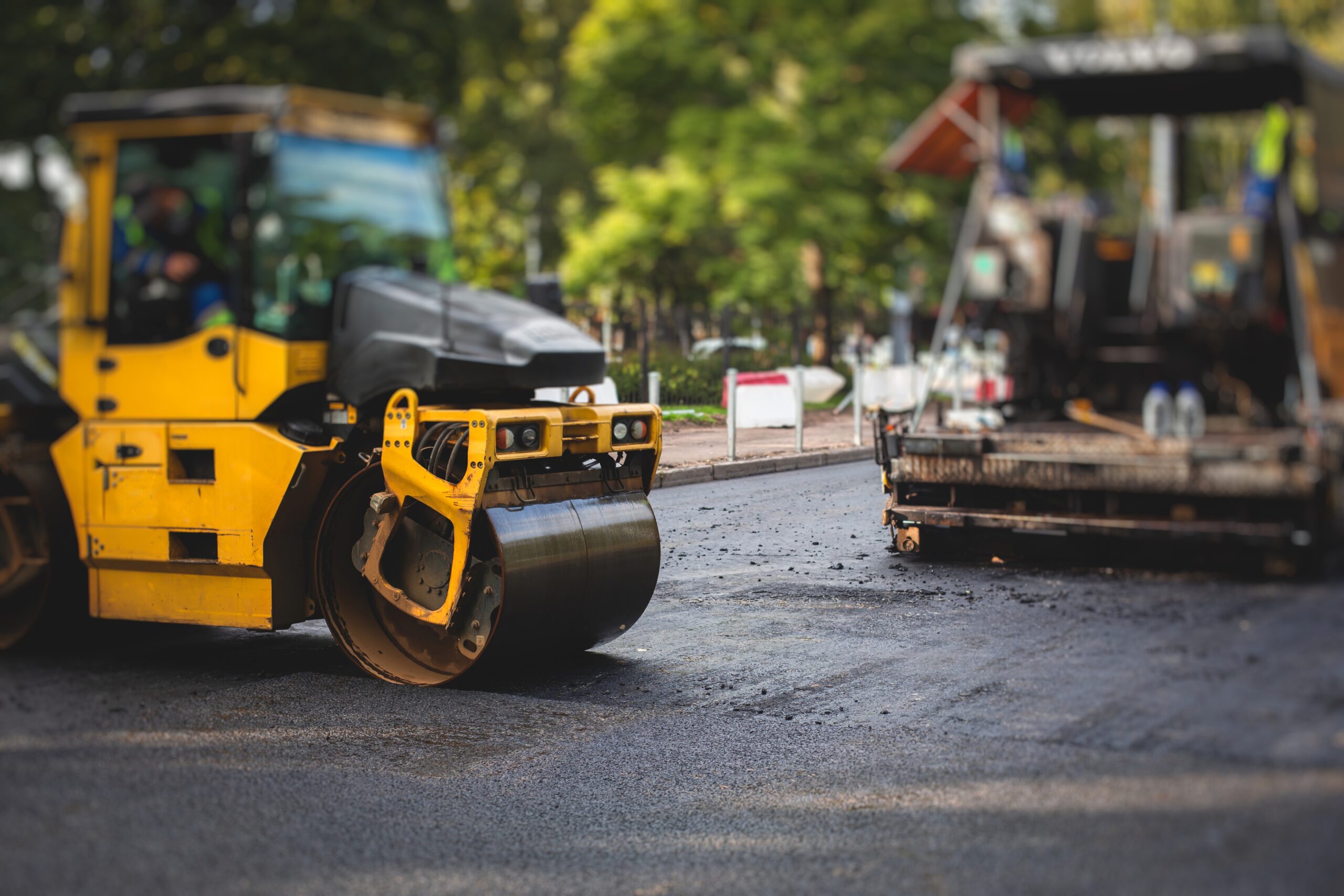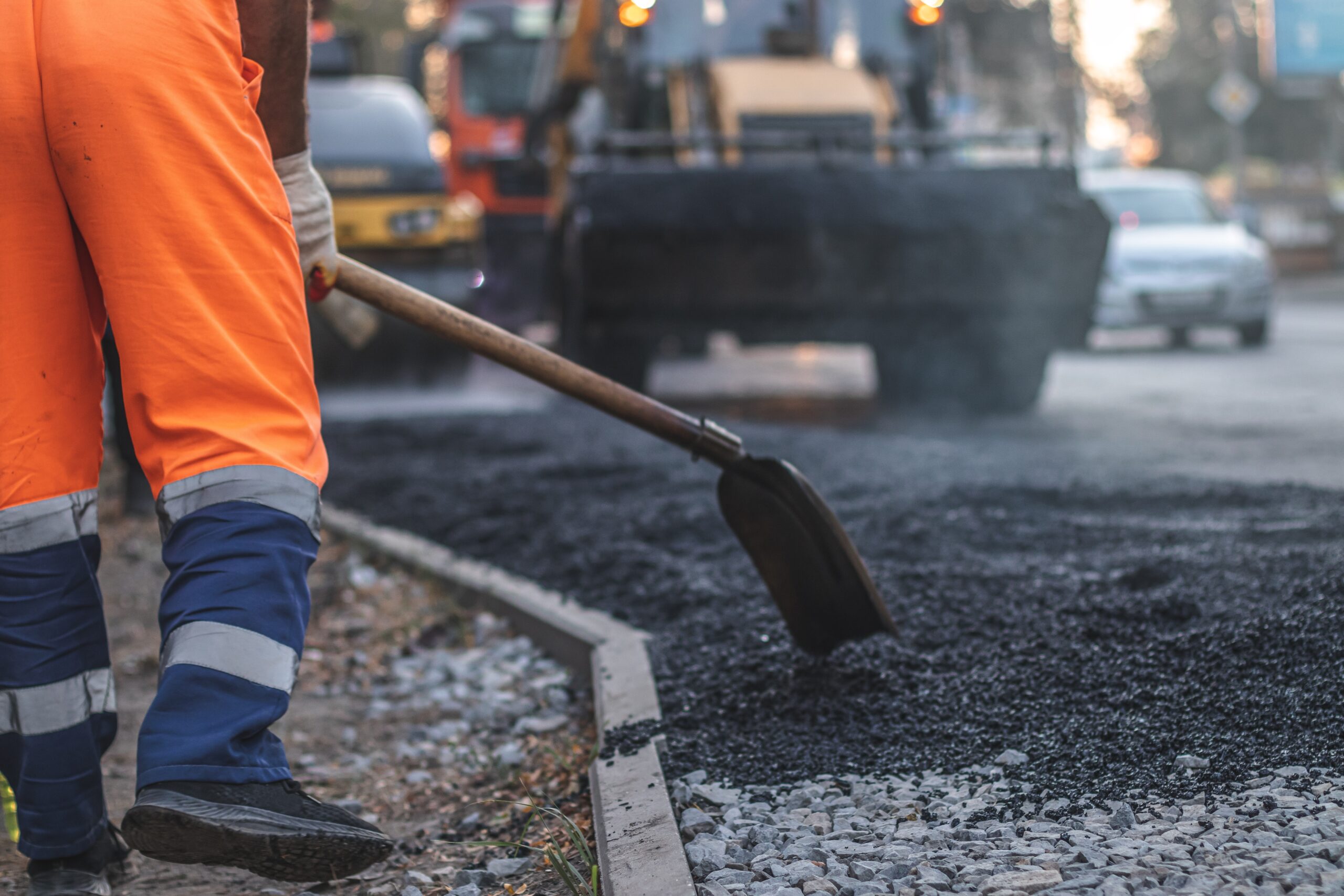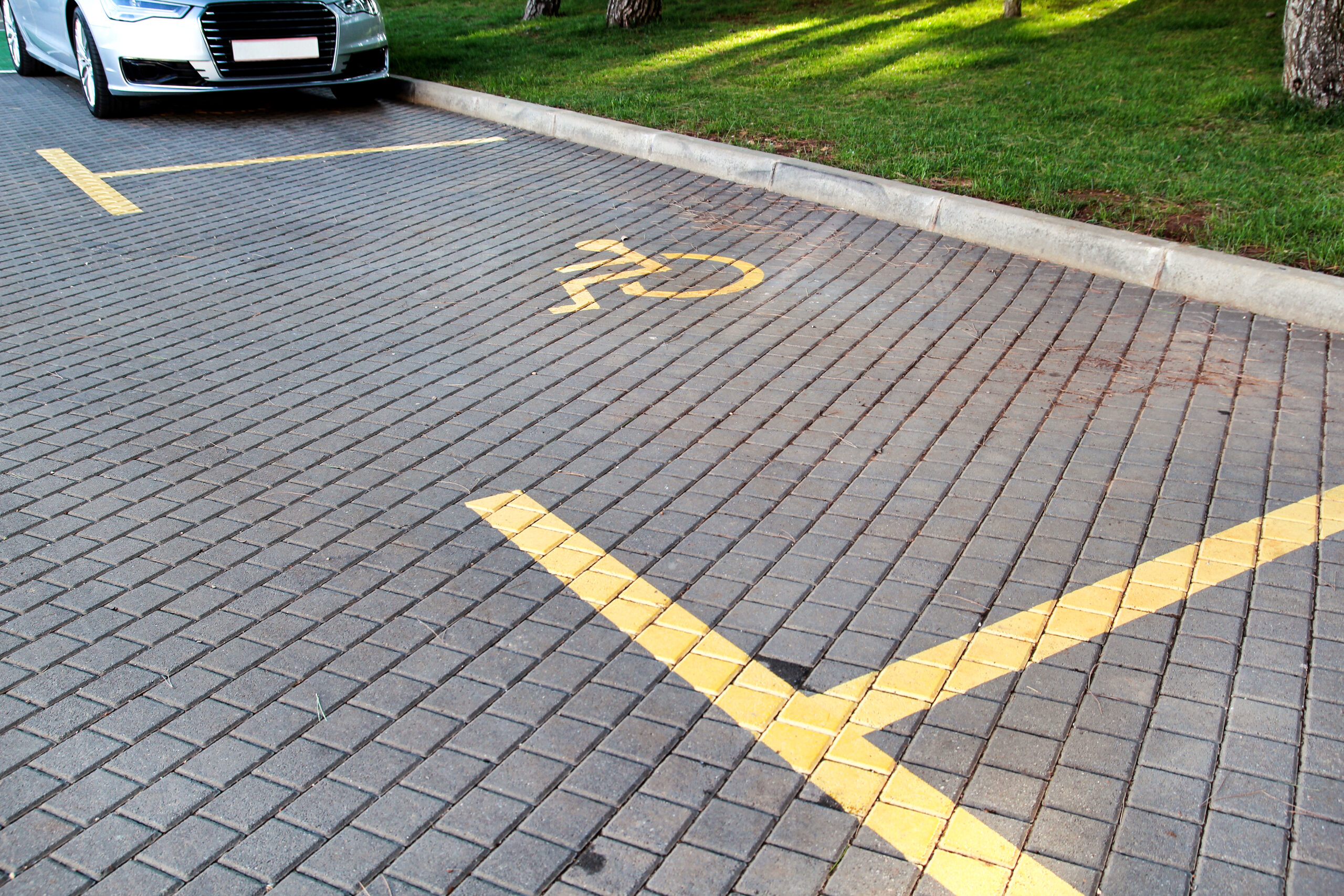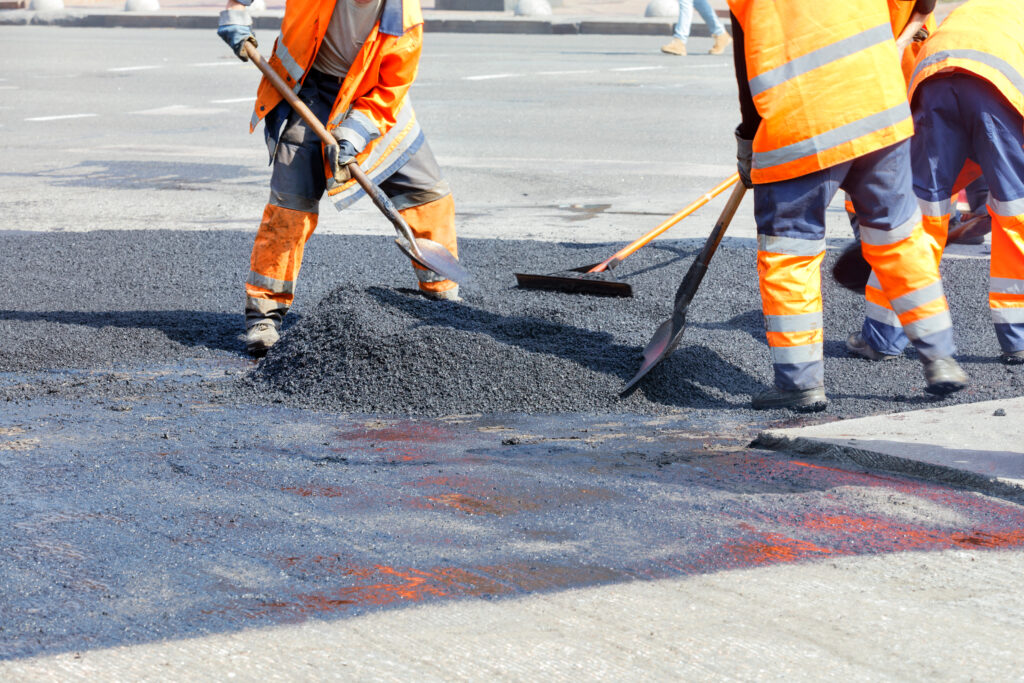
Resurfacing asphalt is one of the most effective ways Colorado Springs property owners can protect and enhance their investment. By placing a new layer of asphalt over an existing surface, resurfacing restores strength, improves curb appeal, and adds years of usable life without the high cost of full replacement.
The local climate reinforces the rationale: the National Weather Service reports that the average first fall freeze in Colorado Springs occurs on 1 October, meaning freeze–thaw stress begins early and persists throughout the colder months.
Meanwhile, pavement deterioration isn’t merely cosmetic: in 2022, an estimated 44 million U.S. drivers sustained vehicle damage severe enough to require repair after hitting potholes, a 57% increase from 28 million in 2021, and the average repair cost was roughly $406.
For both residential driveways and commercial parking lots, the benefits are evident in lower maintenance costs, safer surfaces, and a more professional appearance. At Asphalt Coatings Company, we’ve helped countless property owners in Colorado Springs extend the life of their pavement through resurfacing. In this article, we’ll explain why it’s a choice that delivers long-term value.
The Problem with Ignoring Asphalt Deterioration
Every paved surface eventually shows signs of wear, but overlooking them can quickly turn a manageable repair into a costly replacement. Small cracks may look harmless at first, yet they allow water to seep below the surface. Once moisture reaches the base layer, freeze-thaw cycles in Colorado Springs can exacerbate the damage, leading to the formation of potholes and uneven surfaces.
The City of Colorado Springs’ Public Works department notes that deterioration and road failures are common along the Front Range precisely because of repeated freeze–thaw cycles, which expand water in existing cracks and weaken the structure.
When asphalt continues to break down, property owners face more than repair bills. Damaged pavement creates safety concerns for drivers and pedestrians, increases the risk of vehicle damage, and leaves a poor impression on visitors or customers. Businesses in particular should be mindful of liability risks, as trip hazards or potholes in a parking lot can lead to unnecessary claims.
Financially, delaying maintenance often costs far more than acting early. What could have been resolved with a resurfacing project might require a complete tear-out and replacement if the base is compromised. Addressing surface damage before it escalates not only saves money but also preserves the property’s integrity.
Transportation agencies consistently emphasize that each dollar invested in timely pavement preservation can avoid $6–$10 in later rehabilitation or reconstruction.
What happens if you don’t fix deteriorating asphalt?
Ignoring asphalt deterioration allows small cracks and surface flaws to spread, which weakens the base layer. In Colorado Springs, freeze-thaw conditions exacerbate the issue, often leading to potholes, drainage problems, and ultimately, full pavement failure. Repair costs increase significantly when issues are left untreated.
What Asphalt Resurfacing Is (Overlay vs Replacement)
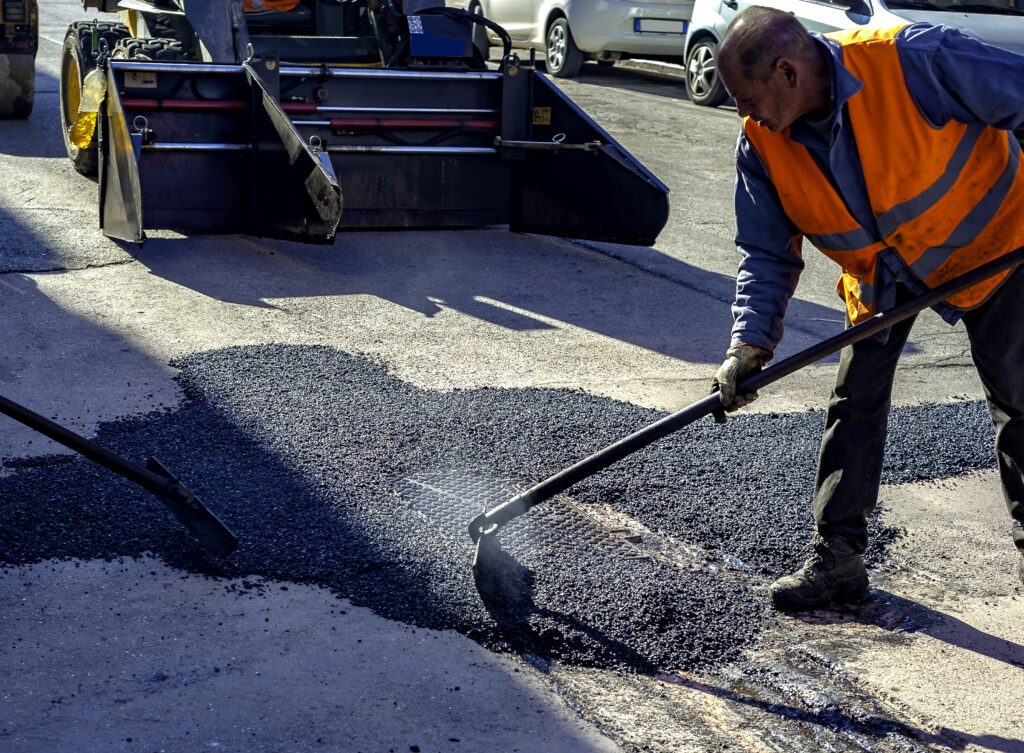
Property owners often wonder what resurfacing actually involves and how it compares to a full replacement. Understanding the difference makes it easier to choose the right solution for your driveway or parking lot.
What Resurfacing Means
Resurfacing, also known as an overlay, adds a new layer of asphalt on top of the existing pavement. This process restores strength, smooths out imperfections, and refreshes the overall look. FHWA describes thin asphalt overlays as preservation treatments specifically used to extend service life, improve ride quality, and enhance impermeability (without adding structural capacity).
Because it builds on the current structure, resurfacing is most effective when the foundation is still in good condition. For many properties in Colorado Springs, it’s a practical way to address aging surfaces without having to start from scratch.
When Resurfacing Works Best
Overlay projects are ideal when damage is limited to the upper layers of the asphalt. Issues such as surface cracks, fading, or shallow potholes can usually be corrected with a new overlay.
In fact, Field findings highlighted by FHWA’s Targeted Overlay Pavement Solutions (EDC-6) program show that overlays perform best when applied before pavements deteriorate too far, thereby reducing traffic impacts and enhancing performance.
As long as the base is stable and drainage is functioning correctly, resurfacing can add years to the service life while keeping costs and project timelines under control.
When Replacement Is Necessary
There are times when resurfacing simply isn’t enough. If the pavement exhibits extensive alligator cracking, sinking sections, or significant drainage failures, these symptoms often point to base-level structural failures rather than mere surface wear.
In such cases, a surface overlay cannot restore the necessary load-carrying capacity: the affected asphalt and subbase must be removed and rebuilt to achieve lasting performance.
FHWA’s Pavement Preservation Definitions memo clarifies exactly this distinction: while preservation treatments and non-structural overlays aim to restore function without increasing structural capacity, structural overlays and heavy rehabilitation fall outside that preservation realm—broad, base-related failures, therefore, signal the need for reconstruction rather than surface-level fixes.
Comparison of Resurfacing vs Replacement
| Aspect | Asphalt Resurfacing (Overlay) | Asphalt Replacement |
| Cost | Typically, 30–50% less than replacement | Higher investment due to full reconstruction |
| Timeframe | Quicker turnaround with minimal disruption | Longer project requiring more site work |
| Best For | Surface-level wear: cracks, fading, minor potholes | Severe base failure, sinking areas, drainage issues |
| Lifespan Added | Extends pavement life by 8–15 years | Provides a brand-new lifespan of 20+ years |
| Environmental Impact | Uses existing structure, reduces waste | Requires more removal and new materials |
Can I resurface my asphalt more than once?
Yes, resurfacing can be done more than once as long as the foundation remains stable. Over time, however, if the pavement has been resurfaced several times or if the base begins to fail, a complete replacement will eventually be necessary to ensure proper performance.
Top Benefits of Resurfacing Asphalt
Resurfacing offers property owners in Colorado Springs far more than a fresh appearance. It’s a practical investment that addresses wear, improves safety, and helps protect the property’s value. Below are some of the most important advantages.
Lower Costs Compared to Replacement
Resurfacing is a more affordable option than a complete replacement because it builds upon the existing pavement. The process avoids tearing out the entire structure, which reduces the amount of labor and materials required. This makes resurfacing a cost-effective way to restore the function and appearance of asphalt while keeping budgets in check.
Extended Pavement Performance
A new overlay shields the existing base from exposure to water and weather. This protection slows down the rate of deterioration and helps pavement perform better over time. While resurfacing doesn’t last as long as a brand-new installation, it can add many more years of reliable use when paired with routine maintenance such as sealcoating and crack repair.
Improved Curb Appeal and First Impressions
Few upgrades refresh a property’s look as quickly as resurfacing. A smooth, dark surface instantly enhances the appearance of a driveway or parking lot, giving it the same polished feel as new pavement. These visual improvements are reinforced by research, which shows that thin overlays not only correct surface defects and improve smoothness, but also reduce noise—benefits that visitors and customers notice immediately.
Safer and Smoother Surfaces
Cracked or uneven pavement can create hazards for both pedestrians and vehicles. Resurfacing eliminates many of those surface-level problems by restoring a level, uniform surface. This makes it safer to walk, drive, and park, and it also helps reduce liability concerns for property owners who are responsible for maintaining safe conditions.
Environmentally Friendly Choice
Because resurfacing reuses the existing foundation, it creates less waste and requires fewer raw materials than starting from scratch. This makes it a more sustainable option for property owners who want to maintain their asphalt responsibly while minimizing environmental impact.
Is resurfacing just a temporary fix?
No, resurfacing is not simply a patch or short-term repair. When the base of the pavement is still stable, resurfacing provides a solid new surface that holds up well with proper maintenance. FHWA classifies thin asphalt overlays as proven preservation tools designed to extend service life and restore functional performance.
Signs Your Driveway or Parking Lot Needs Resurfacing
Pavement rarely fails without giving notice. If you know what to look for, your driveway or parking lot will often show clear signs that resurfacing is the right move. Paying attention to these early indicators helps prevent minor issues from becoming larger, more expensive problems.
- Widespread Cracking: A handful of cracks can usually be sealed, but when they start spreading across large sections of pavement, it’s a clear signal that the surface has weakened. Resurfacing covers those cracks and restores a protective layer, preventing water from seeping in and causing deeper structural damage. Research from the Manual of Practice for Crack Sealing reinforces this, noting that keeping water out is the single most effective way to slow crack growth and preserve the pavement base.
- Faded or Weathered Color: Asphalt naturally loses its rich black color over time, turning dull and gray. This isn’t only about appearance—it also shows the pavement has hardened and lost flexibility. Research on binder oxidation confirms that aging stiffens and embrittles asphalt, increasing susceptibility to cracking.
- Potholes Forming in Several Areas: One or two potholes can often be patched. But when they start appearing throughout a driveway or parking lot, it’s a sign of general surface failure. Resurfacing addresses the problem immediately, creating a smooth and even surface that lasts longer.
- Pooling Water After Rain: When water lingers on asphalt, it typically indicates low spots or poor drainage in the surface. Over time, that standing water seeps into cracks, accelerates deterioration, and compromises the pavement’s foundation. Research from the FHWA underscores this problem, emphasizing that effective pavement drainage is one of the most critical factors in preserving long-term performance and safety, as it ensures water is moved off the surface as quickly as possible.
- Uneven or Rough Surfaces: With age, asphalt can shift or wear at different rates, leaving behind rough patches and uneven areas. This not only makes driving and walking uncomfortable but also creates safety concerns. Resurfacing corrects those flaws and restores the surface to its original level.
Will resurfacing make my pavement look brand new?
Yes. While it doesn’t replace the entire structure, resurfacing lays down a fresh, uniform layer of asphalt that gives your driveway or parking lot the same smooth, dark finish you’d expect from new pavement.
The Resurfacing Process: What to Expect
Resurfacing is a straightforward process, but many property owners aren’t sure what actually happens once the crew arrives. Knowing the steps ahead of time helps set the right expectations and demonstrates why resurfacing is a more efficient option compared to full replacement.
Step 1: Preparing the Surface
The first stage is ensuring the existing pavement is ready to support the new layer. This includes cleaning away dirt, oil, and debris, as well as trimming back any vegetation along the edges. Proper preparation ensures that the new asphalt bonds securely and lasts longer. The FHWA’s Thin HMA Overlay Checklist highlights surface preparation, as well as verifying that temperatures and weather conditions are suitable before paving begins.
Step 2: Repairing Existing Damage
Before any new asphalt is laid down, cracks and potholes need attention. These areas are filled or patched so the surface is even. Addressing damage at this stage prevents weak points from becoming apparent in the new overlay later.
FHWA’s Distress Identification Manual explains that cracks left untreated allow water to seep down and weaken the base, which only accelerates the kind of failures a resurfacing project is meant to prevent.
Step 3: Applying a Bonding Layer
A thin tack coat, often made of asphalt emulsion, is applied to help the new layer adhere to the existing surface. This bonding step is critical to ensure the overlay doesn’t separate or shift over time.
Step 4: Laying the New Asphalt Overlay
Once the surface is prepared and bonded, a new layer of hot asphalt is placed over the existing pavement. The thickness of this overlay depends on the condition of the pavement and the expected traffic load. This is the step that restores both strength and appearance.
Step 5: Compacting and Finishing
After the new asphalt is spread, it’s compacted with rollers to create a smooth, even finish. Edges are tightened, and the surface is checked to ensure it meets performance and safety standards. The result is a uniform surface that looks and feels brand new.
Step 6: Opening for Use
Resurfaced asphalt doesn’t require the lengthy downtime that replacement does. Once the new surface has cooled and hardened, it’s typically ready for vehicles and foot traffic. The turnaround is quick, minimizing disruption for both homes and businesses.
How long does asphalt resurfacing take from start to finish?
Most resurfacing projects are completed within one to two days, depending on the size of the area and the extent of preparation needed. Recent municipal programs illustrate the cadence: Salt Lake City’s overlay projects generally take about two days to complete, and the City of Santee schedules paving within two days of edge grinding during residential overlays.
Maintenance and Care After Resurfacing
Resurfacing gives your pavement a fresh start, but keeping it in good condition requires regular care. Simple maintenance steps can significantly extend the life of your new surface and protect your investment.
Schedule Routine Sealcoating
A sealcoat acts as a shield against the sun, moisture, and vehicle fluids. Once your asphalt has cured, applying a sealcoat helps lock in durability and maintain that rich black finish. Property owners should plan to sealcoat on a regular schedule recommended by their contractor.
State transportation manuals, such as Caltrans’ Construction Manual (§4-37), go even further by setting specific weather and temperature criteria for seal coats, showing how much proper timing and conditions matter for long-term performance.
Stay Ahead of Small Cracks
Even with a new overlay, cracks can develop over time due to temperature swings and heavy use. Sealing them promptly prevents water from slipping through and reaching the base. Quick attention to minor issues avoids more costly repairs down the road.
Keep the Surface Clean
Oil spots, debris, and standing water can all shorten the lifespan of asphalt. Routine cleaning not only improves appearance but also protects the surface from chemical and moisture damage. Guidance, such as the Department of Defense’s UFC 3-270-01 Pavement Maintenance Manual, even highlights regular cleaning and prompt treatment of contaminants as essential steps for maintaining both asphalt and concrete pavements in good condition over time.
Manage Heavy Loads Wisely
Driveways and parking lots serve a wide range of purposes. Being mindful of heavy trucks or equipment can reduce stress on the surface and keep it in better condition for a longer period. Where possible, spreading out heavy loads helps prevent premature wear and tear.
FHWA’s comprehensive truck size–weight study explains that pavement deterioration rises steeply with axle load (often approximated by a third‑ to fourth‑power relationship), illustrating why concentrated heavy loads accelerate damage.
Schedule Professional Inspections
Having a contractor evaluate your pavement every few years ensures that minor concerns are identified and addressed early. Professionals can recommend when to sealcoat, when to repair, and eventually when it may be time to resurface again.
How soon after resurfacing should I sealcoat my asphalt?
Sealcoating should not be applied immediately after resurfacing. The new asphalt needs time to cure before a sealcoat can bond properly. Most contractors recommend waiting at least several months, but the exact timing depends on weather conditions and usage.
Protect Your Property With Professional Resurfacing
At Asphalt Coatings Company, we understand that asphalt is a long-term investment, and resurfacing is one of the most effective ways to protect it. For Colorado Springs property owners, resurfacing provides stronger pavement, safer surfaces, and a refreshed look that instantly improves curb appeal. Addressing issues early not only saves money but also prevents further damage and helps your property stay in vtop condition.
Don’t wait until minor signs of wear turn into costly repairs. Contact Asphalt Coatings Company today for a professional evaluation and a free estimate. We’re ready to help you extend the life of your driveway or parking lot with resurfacing that truly pays off.
Frequently Asked Questions
Can resurfacing fix uneven pavement?
Yes. Resurfacing can correct minor uneven areas by leveling out the surface. If the problem comes from base failure, more extensive repair may be required before resurfacing.
Is resurfacing an eco-friendly option?
Resurfacing is considered more environmentally friendly than replacement because it reuses the existing base and requires fewer new materials, thereby reducing waste and resource consumption.
Will resurfacing make my asphalt stronger?
Resurfacing adds a new layer of protection and durability to the existing surface. While it doesn’t rebuild the base, it strengthens the pavement against weather, traffic, and surface wear.
How do weather conditions affect resurfacing projects in Colorado Springs?
Moderate temperatures and dry conditions provide the best environment for resurfacing. Extreme heat or sudden cold snaps can make the process more challenging, which is why many projects are scheduled in spring or fall.
What maintenance should I do right after resurfacing?
The most important step is to allow the new surface to cure properly before subjecting it to heavy use. After that, routine sweeping, prompt crack sealing, and eventually sealcoating will help preserve the new overlay.

